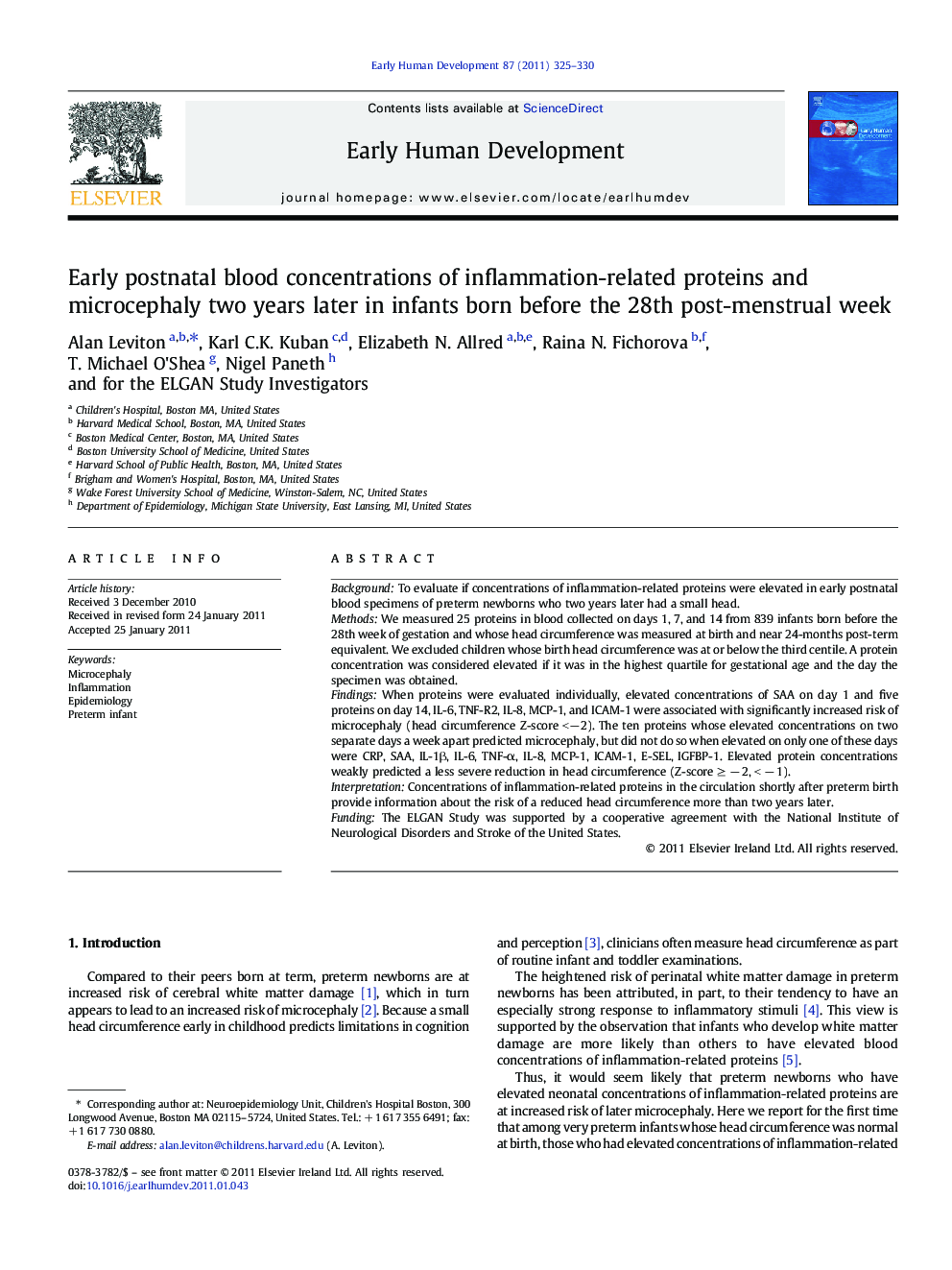| Article ID | Journal | Published Year | Pages | File Type |
|---|---|---|---|---|
| 3917120 | Early Human Development | 2011 | 6 Pages |
BackgroundTo evaluate if concentrations of inflammation-related proteins were elevated in early postnatal blood specimens of preterm newborns who two years later had a small head.MethodsWe measured 25 proteins in blood collected on days 1, 7, and 14 from 839 infants born before the 28th week of gestation and whose head circumference was measured at birth and near 24-months post-term equivalent. We excluded children whose birth head circumference was at or below the third centile. A protein concentration was considered elevated if it was in the highest quartile for gestational age and the day the specimen was obtained.FindingsWhen proteins were evaluated individually, elevated concentrations of SAA on day 1 and five proteins on day 14, IL-6, TNF-R2, IL-8, MCP-1, and ICAM-1 were associated with significantly increased risk of microcephaly (head circumference Z-score <−2). The ten proteins whose elevated concentrations on two separate days a week apart predicted microcephaly, but did not do so when elevated on only one of these days were CRP, SAA, IL-1β, IL-6, TNF-α, IL-8, MCP-1, ICAM-1, E-SEL, IGFBP-1. Elevated protein concentrations weakly predicted a less severe reduction in head circumference (Z-score ≥ − 2, < − 1).InterpretationConcentrations of inflammation-related proteins in the circulation shortly after preterm birth provide information about the risk of a reduced head circumference more than two years later.FundingThe ELGAN Study was supported by a cooperative agreement with the National Institute of Neurological Disorders and Stroke of the United States.
